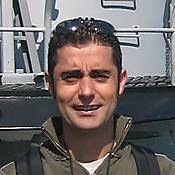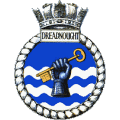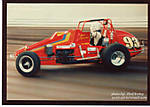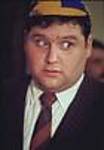You are viewing the archived version of the site.
Go to modelshipwrights.com for the current dynamic site!
Go to modelshipwrights.com for the current dynamic site!
1⁄700USS San Saba
10
Comments
USS San Saba (APA-232) was a Haskell-class attack transport which served with the US Navy in World War II. Commissioned in December 1944, she arrived just too late to see action, and spent the last weeks of the war on transport missions.
San Saba was named after a county in Texas. She was laid down on 29 September 1944 under Maritime Commission contract (MCV hull 678) by Kaiser Shipbuilding of Vancouver, Washington; launched on 12 November 1944; acquired by the Navy from the Maritime Commission on loan-charter basis on 3 December 1944; and commissioned the same day, Capt. E. E. Berthold in command.
San Saba returned to Leyte temporarily at the end of September before sailing for San Francisco on 6 October. En route, she was detoured to Seattle, Washington, where she arrived on the 24th.
Following a period in drydock at Everett, Washington, she made a voyage in November and December to Okinawa and returned to San Pedro, California. On 14 January 1946, ownership of San Saba was transferred to the Navy Department; and, by the end of February, she had completed a passenger/cargo run to the Marianas. A month later, she departed San Francisco to carry troops to Okinawa and returned on 4 May.
San Saba sailed on 18 May for China and arrived at Shanghai on 5 June. She got underway on the 10th and steamed to Okinawa to embark over 900 Naval personnel for transport to Yokosuka, Japan. She returned to San Diego on 4 July. On the 17th of July, she was ordered to the Mare Island Naval Shipyard at San Francisco for inactivation.
On 17 December 1946, San Saba was decommissioned and assigned to the San Francisco Group of the Pacific Reserve Fleet. On 1 October 1958, she was transferred to the Maritime Commission, struck from the Navy List, and was placed in the National Defense Reserve Fleet at Suisun Bay, California. Through June 1974, SS San Saba remained at Suisun Bay. Her final disposition is unknown.
Name: USS San Saba (APA-232)
Namesake: A county in Texas.
Builder: Kaiser Shipbuilding
Laid down: 29 September 1944
Launched: 12 November 1944
Sponsored by: Mrs. Richard Bissell
Acquired: 3 December 1944
Commissioned: 3 December 1944
Decommissioned: 17 December 1946
Struck: 1 October 1958
Fate: Unknown
General characteristics
Class and type: Haskell-class attack transport
Tonnage: 150,000 cu. ft, 2,900 tons
Displacement: 6,873 tons (lt), 14,837 t. (fl)
Length: 455 ft
Beam: 62 ft
Draft: 28 ft 1 in
Propulsion: 1 x Joshua Hendy geared turbine, 2 x Babcock & Wilcox header-type boilers, 1 x propeller, designed shaft horsepower 8,500
Speed: 18 knots
Boats and landing craft carried: 2 x LCM, 12 x LCVP, 3 x LCPU
Capacity: 86 Officers 1,475 Enlisted
Crew: 56 Officers, 480 enlisted
Armament: 1 x 5"/38 caliber dual-purpose gun mount, 1 x quad 40mm gun mount, 4 x twin 40mm gun mounts, 10 x single 20mm gun mounts Notes: MCV Hull No. 678, hull type VC2-S-AP5
There were quite a few flaws in the hull and deck molding that needed fixed. However, the LCVPs, armament and other small details are really well done with a lot of high detail. Since this was a commission build, from the wife with a bit of a time limit, I did the cranes rigging simple as well as the light panel water with some silicone caulk here and there for raised waves.
This was my first full diorama with land as well and it was a learning experience. Trucks were from JAG and the Wildcats flying overhead are Trumpeter. The damaged Japanese pill box is from the Tamiya IJN Light Vessel Ordinance set. I really think this could of benefited with photo etch figures and more time and effort put into it but all in all it turned out quite interesting. The trees were just masking tape wrapped wire with candy foil cut for the palm prawns.
San Saba was named after a county in Texas. She was laid down on 29 September 1944 under Maritime Commission contract (MCV hull 678) by Kaiser Shipbuilding of Vancouver, Washington; launched on 12 November 1944; acquired by the Navy from the Maritime Commission on loan-charter basis on 3 December 1944; and commissioned the same day, Capt. E. E. Berthold in command.
World War II…
After trials and amphibious training, San Saba departed San Francisco on 1 July 1945 for the Marshall Islands to transport troops and war supplies. She reached Eniwetok on 14 July; and, during the two months following, carried out transport missions to Ulithi, Caroline Islands; Leyte, Philippines; Manus, Admiralty Islands; Milne Bay, New Guinea; back to the Philippines at Mindoro, Subic Bay, and Manila; and thence on occupational duty to Yokohama, Sendai, Mutsu Kawa, and Ishinomaki Wan, Japan.San Saba returned to Leyte temporarily at the end of September before sailing for San Francisco on 6 October. En route, she was detoured to Seattle, Washington, where she arrived on the 24th.
Following a period in drydock at Everett, Washington, she made a voyage in November and December to Okinawa and returned to San Pedro, California. On 14 January 1946, ownership of San Saba was transferred to the Navy Department; and, by the end of February, she had completed a passenger/cargo run to the Marianas. A month later, she departed San Francisco to carry troops to Okinawa and returned on 4 May.
San Saba sailed on 18 May for China and arrived at Shanghai on 5 June. She got underway on the 10th and steamed to Okinawa to embark over 900 Naval personnel for transport to Yokosuka, Japan. She returned to San Diego on 4 July. On the 17th of July, she was ordered to the Mare Island Naval Shipyard at San Francisco for inactivation.
Decommission...
On 17 December 1946, San Saba was decommissioned and assigned to the San Francisco Group of the Pacific Reserve Fleet. On 1 October 1958, she was transferred to the Maritime Commission, struck from the Navy List, and was placed in the National Defense Reserve Fleet at Suisun Bay, California. Through June 1974, SS San Saba remained at Suisun Bay. Her final disposition is unknown.
Name: USS San Saba (APA-232)
Namesake: A county in Texas.
Builder: Kaiser Shipbuilding
Laid down: 29 September 1944
Launched: 12 November 1944
Sponsored by: Mrs. Richard Bissell
Acquired: 3 December 1944
Commissioned: 3 December 1944
Decommissioned: 17 December 1946
Struck: 1 October 1958
Fate: Unknown
General characteristics
Class and type: Haskell-class attack transport
Tonnage: 150,000 cu. ft, 2,900 tons
Displacement: 6,873 tons (lt), 14,837 t. (fl)
Length: 455 ft
Beam: 62 ft
Draft: 28 ft 1 in
Propulsion: 1 x Joshua Hendy geared turbine, 2 x Babcock & Wilcox header-type boilers, 1 x propeller, designed shaft horsepower 8,500
Speed: 18 knots
Boats and landing craft carried: 2 x LCM, 12 x LCVP, 3 x LCPU
Capacity: 86 Officers 1,475 Enlisted
Crew: 56 Officers, 480 enlisted
Armament: 1 x 5"/38 caliber dual-purpose gun mount, 1 x quad 40mm gun mount, 4 x twin 40mm gun mounts, 10 x single 20mm gun mounts Notes: MCV Hull No. 678, hull type VC2-S-AP5
The Model…
This is the 1:700 scale Loose Cannon resin kit of the Haskell class transport I build in June of 2008. I built this for my wife's grandfather who served on the ship during WWII. He thoroughly enjoyed receiving it. The kit comes with its own photo etch, including the single 20mm guns, and some additional IJN spare railing was used.There were quite a few flaws in the hull and deck molding that needed fixed. However, the LCVPs, armament and other small details are really well done with a lot of high detail. Since this was a commission build, from the wife with a bit of a time limit, I did the cranes rigging simple as well as the light panel water with some silicone caulk here and there for raised waves.
This was my first full diorama with land as well and it was a learning experience. Trucks were from JAG and the Wildcats flying overhead are Trumpeter. The damaged Japanese pill box is from the Tamiya IJN Light Vessel Ordinance set. I really think this could of benefited with photo etch figures and more time and effort put into it but all in all it turned out quite interesting. The trees were just masking tape wrapped wire with candy foil cut for the palm prawns.
Comments
Gorgeous work.. I like the way water color changes closer to land. Lots of good ideas here, thanks for sharing, cheers!
JAN 05, 2009 - 02:45 AM
Aarrgh!
You beat me on showing the Palm Tree stuff Anthony
I am waiting for a proper lighting conditions to make a MOD on this:
 Now back to your USS San Saba:
I like all the action you have put on the ship, lot's of small details that show that "something is happening"!
Details like cables/ropes make it even more realistic
The action on shore also looks good, but has you say, some PE persons could help a little bit more
I also thing you should try on making your own water instead of the plastic seascape, since it could make this small scene even more convincing
Congratulations Anthony!!
Rui
Now back to your USS San Saba:
I like all the action you have put on the ship, lot's of small details that show that "something is happening"!
Details like cables/ropes make it even more realistic
The action on shore also looks good, but has you say, some PE persons could help a little bit more
I also thing you should try on making your own water instead of the plastic seascape, since it could make this small scene even more convincing
Congratulations Anthony!!
Rui
 Now back to your USS San Saba:
I like all the action you have put on the ship, lot's of small details that show that "something is happening"!
Details like cables/ropes make it even more realistic
The action on shore also looks good, but has you say, some PE persons could help a little bit more
I also thing you should try on making your own water instead of the plastic seascape, since it could make this small scene even more convincing
Congratulations Anthony!!
Rui
Now back to your USS San Saba:
I like all the action you have put on the ship, lot's of small details that show that "something is happening"!
Details like cables/ropes make it even more realistic
The action on shore also looks good, but has you say, some PE persons could help a little bit more
I also thing you should try on making your own water instead of the plastic seascape, since it could make this small scene even more convincing
Congratulations Anthony!!
RuiJAN 05, 2009 - 04:06 AM
Great work Anthony, nice subtle colour gradation on the water. I agree with Rui, some PE sailors/marines on the beach would top it off.
thanks for sharing,
Frank
JAN 05, 2009 - 04:16 AM
Well done, though, as a deck officer, not having a kedge anchor deployed astern would make me nervous!
--Karl
JAN 05, 2009 - 10:25 AM
Kedge anchor eh ? - must look into that.
Yes, I agree with my chums, a very vital dio that tells the story. lots of animation and action.
Also, you'll have to make your mind up about the pe figures, I've stuck on circa 500 to my HMS bruiser dio which is nearing completion, and coincidentally has aircraft 8 x Spitfires in the overhead it all adds up to a very satisfying mix.
cheers,
Peter F
JAN 07, 2009 - 05:14 AM
Thanks for the replies everyone. I love hearing the good and bad ablout my work as it helps me see what I'm doing good and all I need to improve still. I'm still a bit timid about doing different water. Too worried I' blotch it and end up ruining the model. Part of it to is laziness to do it after two or three months on the model.
As for the kedge anchor, if they had one it was small and they stored it in locker somewhere. I never did seen one in the photos or plans online. Maybe I missed it though.
http://www.rpadden.com/232/232.htm
JAN 07, 2009 - 10:34 AM
Hi Anthony!
That's not a biggie, really. It's just that your diorama depiction is so realistic, anchoring a ship so close to shore is fraught with danger. LST's, which are designed to run up on beaches, do have kedge anchors on their sterns to both steady them against the swells and to bodily pull them off the beach shelf.
I for one appreciate dioramas that push the envelope and I hope you will carry on the good work!
--Karl
JAN 07, 2009 - 10:50 AM
I'm okay with no Kedge, other than a little irked that I missed a great modeling opportunity for a deployed rear anchor! I should of thought about a rear anchor. I see them all the time on my IJN ships and as the dio is now two states away... oh well I'll get it next time. Thanks everyone for your replies and comments. Happy Modeling!
JAN 08, 2009 - 10:18 AM
Copyright ©2021 by Anthony Kochevar . _OPINIONS Model Shipwrights, KitMaker Network, or Silver Star Enterrpises. Images also by copyright holder unless otherwise noted. Opinions expressed are those of the author(s) and not necessarily those of Model Shipwrights. All rights reserved. Originally published on: 2009-01-05 00:00:00. Unique Reads: 9424



























